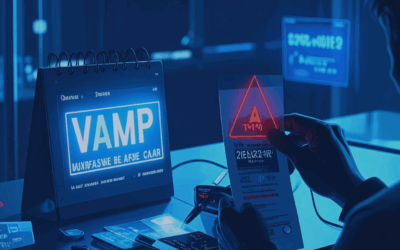Welcome to the era of digital commerce, where the surge in online sales is matched only by the challenges posed by increasing instances of fraud. In this blog post, we will delve into the intricacies of 3D Secure 2.0 (3DS2), unraveling its significance in securing online transactions. Join us, online merchants and industry professionals, as we navigate through the details of 3DS2 and its pivotal role in fortifying digital payment security.
What is 3DS2?
Let’s commence with a fundamental inquiry: What is 3DS2? In the realm of online transactions, 3DS2, or 3D Secure 2.0, serves as an advanced authentication protocol designed to validate cardholders during online purchases. Think of it as a sophisticated gatekeeper at the entrance of a club, ensuring that only authorized individuals gain access. This version, introduced in 2016, represents a significant leap forward, surpassing its predecessor, 3D Secure 1, in both security and user experience.
The Evolution: From 3DS1 to 3DS2
Understanding the brilliance of 3DS2 requires a brief historical overview. The original 3D Secure system, introduced in 1999, faced challenges, especially with the advent of smartphones. The emergence of 3DS2 in 2016 marked a substantial advancement, aligning with the digital era and addressing the limitations of its predecessor.
In its early days, 3DS1 often disrupted the payment flow, redirecting users to their bank’s website and resulting in abandoned carts. The advent of 3DS2 heralded a new era, promising not only enhanced security but also a seamless user experience. It embraced current technologies and prepared to face the challenges of the future.
The Purpose of 3DS2: Beyond Security
Why does 3DS2 matter, particularly for businesses in the European Economic Area (EEA)? The key lies in Strong Customer Authentication (SCA), a crucial requirement introduced in 2018 under the revised Payment Services Directive (PSD2). SCA demands additional authentication parameters beyond usernames and passwords, elevating the standards of identity verification.
3DS2 takes the authentication game a step further, requiring merchants to transmit additional transaction data. This aids the issuing bank in confirming the legitimacy of the cardholder, ensuring that the person initiating the transaction is indeed the rightful owner of the card. While SCA might sound complex, 3DS2 emerges as the guiding force, leading businesses through this intricate maze.
Impact on Your Business: Beyond Security
For online merchants dealing with recurring payments in the EEA, 3DS2 is not just an acronym; it’s a strategic asset. The added layer of security it provides can act as a shield against chargebacks. In the rare event of a chargeback, having customers utilize 3DS2 means the liability shifts from your business to the card issuer – a guarantee of security and peace of mind.
Moreover, 3DS2 acts as a troubleshooter, reducing friction in the payment process. A seamless checkout experience is crucial for preventing frustrated customers from abandoning their carts. With 3DS2, you’re streamlining the payment process, customizing authentication methods, and optimizing for mobile – a triple threat against cart abandonment.
How Does 3DS2 Work Its Magic?
Now that we’ve established 3DS2 as the hero of online security, let’s explore the mechanics behind its authentication process. Visualize it as a grand illusion, where information seamlessly dances between three domains – the acquirer, card schemes, and issuer.
Authentication Flow: Frictionless vs. Challenge
The magic show unfolds through two distinct flows: the frictionless flow and the challenge flow. In the frictionless realm, customers glide through authentication without breaking a sweat. No extra inputs, no hurdles – just a seamless transaction experience. On the flip side, the challenge flow spices things up. When a transaction poses a higher risk, customers might need to add an extra layer – perhaps an OTP – to stir up the authentication process.
The 3DS2 Crystal Ball: Risk-Based Analysis
Ever wondered how 3DS2 distinguishes between a smooth transaction and a potentially dicey one? It’s all in the crystal ball – or rather, risk-based analysis. With over 150 data fields scrutinized – from browser IP address to merchant category code – issuers create a risk profile, deciding the fate of the transaction. The result? A frictionless approval for low-risk transactions and a challenge for the riskier ones.
Benefits Galore: Why Merchants Love 3DS2
Beyond the magic tricks, let’s discuss the real-world advantages of 3DS2 for merchants. It’s not just about security; it’s a comprehensive package.
Improving Customer Experience
In a world where user experience reigns supreme, 3DS2 emerges as the ultimate crowd-pleaser. Supporting transactions across various devices, from desktops to mobiles, it’s the digital chameleon every merchant needs. No more redirects, no more jarring interruptions – just a seamless checkout experience. The forthcoming 3DS version 2.3 promises to enhance authentication flows for IoT devices, including the world of voice authentication.
Liability Shift: A Merchant’s Best Friend
Chargebacks – the nightmare of every merchant. Enter 3DS2, the trusty sidekick that shifts the responsibility of customer authentication back to the issuer. Say goodbye to sleepless nights over chargeback disputes; with 3DS2, you’re not just securing transactions, you’re securing your peace of mind.
Regulatory Compliance: Meeting PSD2 Head-On
Let’s face it – compliance isn’t the most captivating topic, but it’s crucial. 3DS2 doesn’t just enhance security and user experience; it also aligns with regulations. Meeting the requirements of the Payment Services Directive 2.0 (PSD2), it aligns with the evolving standards of the EU. As we eagerly await PSD3, it’s clear that 3DS2 is not just a trend; it’s the future of secure online transactions.
A Peek Behind the Curtain: Limitations of 3DS2
As we continue our journey, it’s essential to acknowledge that even the mighty 3DS2 has its limitations. No hero is without flaws, and 3DS2 is no exception.
Lessons from the Past: Overcoming 3DS1 Hurdles
Recall 3DS1 and its dreaded conversion drop? The lessons learned from its pitfalls have been invaluable in crafting 3DS2. While the new version aims to minimize drawbacks, including a more user-friendly experience for smartphone users, the true test lies in its widespread adoption.
The Conversion Conundrum
A study by Ravelin sheds light on the conversion conundrum – 22% of transactions authenticated using 3D Secure 1 faced the bitter taste of cart abandonment. This was a key reason halting 3d Secure’s widespread adoption. 3DS2 however reduces friction, striking the right balance between security and seamless transactions. It’s a tightrope walk, and 3DS2 treads it carefully.
Conclusion: The Grand Finale
In the grand finale of our exploration into the realm of 3DS2, one thing is clear – it’s not just a security protocol; it’s a transformative force in the world of online transactions. With its seamless authentication flows, risk-based analysis, and commitment to improving customer experience, 3DS2 isn’t just an upgrade; it’s the future.
As an online merchant or industry enthusiast, embracing 3DS2 isn’t merely adopting a security measure; it’s joining a revolution. So, let’s raise a virtual toast to the magic of 3DS2 – where security meets user experience, and online transactions become a seamless symphony of technology and trust. Here’s to secure, frictionless, and magical transactions in the world of e-commerce!
Interested in adding 3ds2 to your financial services arsenal? We can help! Read more on PayShields 3ds2 offering or contact us to talk to one of of our experts today.









